How Much Are Pearls Worth? A Quick Guide To Real Pearl Pricing

Pearls nowadays are getting more attention in contrast to any other stone, and with the new & to some extent, changed interest in pearls, you might be speculating how much pearls are worth. Real pearl value can vary from hundred dollars to $100 million. On the other hand, the most significant part of real and natural pearl necklace jewelry can range from $100 to $2000.
Even in a recent public sale, a strand of natural saltwater pearls was sold for US$2.5million. Cultured pearls, in contrast, are much less in cost, ranging from just US$50 to more than US$150,000.
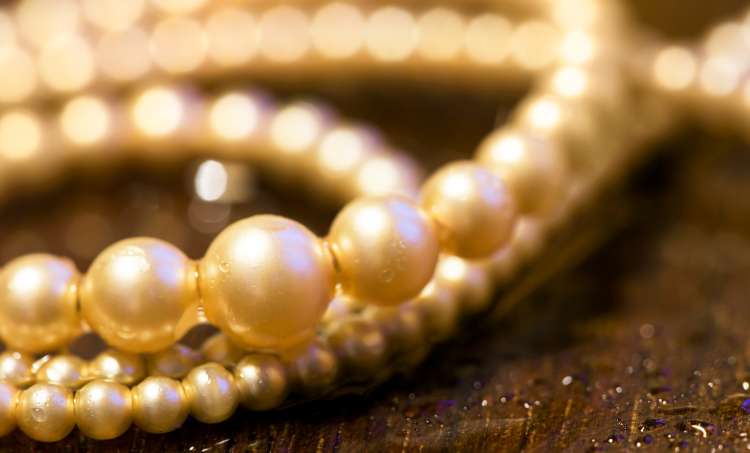
Saltwater pearls vs. Freshwater pearls
On the whole, freshwater pearls are somewhat cheaper, while saltwater pearls are usually more costly because of their scarcity. Furthermore, freshwater pearls have a poor quality luster than saltwater pearls while being wholly made of nacre. The average price for a freshwater pearl necklace is something like $50. Conversely, natural freshwater pearls are rare and more expensive than cultured freshwater pearls; accordingly, you can look ahead to pay a higher price for them. The average price of a saltwater pearl is something like $200.
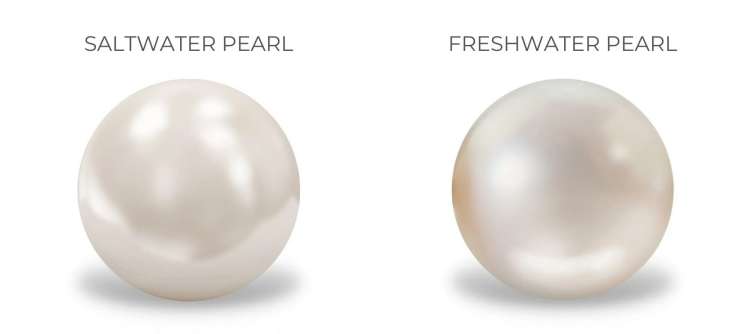
How to calculate the value of pearls?
Earlier than we jump right in, let's look into the general rule at what time it draws closer to buying pearls. Not all pearls are created the same, so the answer to how much pearls are worth counts on several factors, such as the origin of pearls, category, size, and color.
Let's take a closer look and try to give more details on how to calculate the worth of your pearls:
Natural Pearls vs. Cultured Pearls

If you're a keen follower of luxury designer jewelry, you might have noticed some magnificent prices laid down by natural pearl strands and vintage pearl jewelry in recent public sales.
Regardless of their vast price difference, natural and cultured pearls are real. They are developed from pearl-bearing oysters, either as freshwater pearl cultivation or saltwater pearls. Moreover, the freshwater pearl formation procedure is very similar for cultured and natural pearls.
Natural pearls grow devoid of human involvement, whereas cultured pearls form when a farmer pops a mollusk into the oyster shell. Natural pearls materialize more 'organic' in contrast to cultured pearls. For example, they may not be good shaped as their cultured pearl matching parts. Natural pearls are rare, and nearly all of them have been harvested before. That's why natural pearls are costly and more or less impossible to locate.
Cultured pearls, in contrast, are not, in fact, rare. Cultured pearls are the pearls employed to make more or less all kinds of jewelry in the marketplace today.
Pearl Color
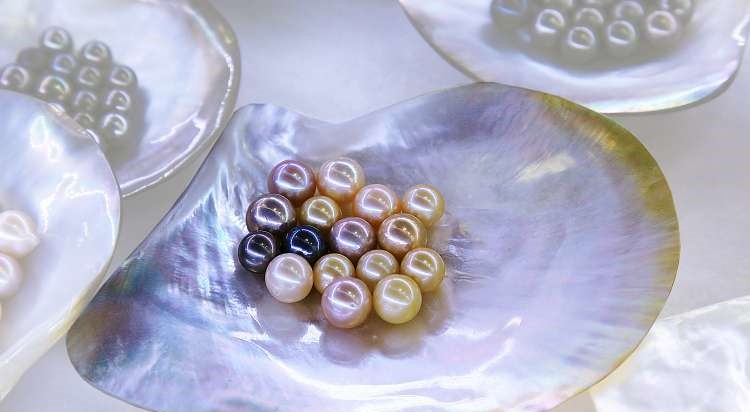
Natural and cultured pearls occur in a wide range of colors. There are warm shades like pink, orange, and yellow and cool shades like green, blue, and violet. Pearls have a broad range of hues, from light to dark.
Pearl color can include three components. Body color is the primary dominating color of a pearl. Overtone is the semi-transparent color lying above the body color pearl. It's generally present over the whole pearl surface or a huge part. Orient appears when there's more than one overtone or semi-transparent color above the body color. It's noticeable in a much smaller area on top of the pearl surface and can come in gleaming rainbow colors.
All pearls embrace the primary body color, whether natural or cultured pearls. On the other hand, not all embrace orientation or overtone. Pink overtones on top of white pearls are generally more expensive than those without this.
Furthermore, the rule of demand and subsequent supply also settles on the value of some pearl colors at any specified time. If the supply of fine-quality pearls exhibiting a favorite color is low, their value can rise to bizarrely high levels.
Pearl Shape
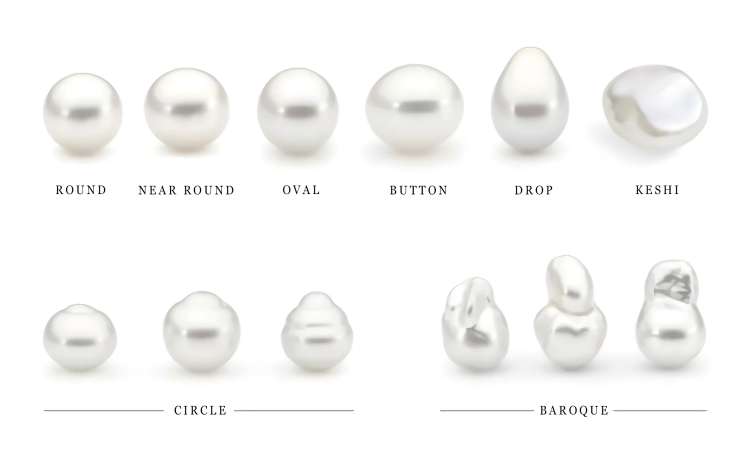
The shape of a pearl is another decisive factor in determining the pearl's value. A round white and completely rotund pearl is one of the most expensive. On the other hand, at the same time, as one and all look for a perfectly round pearl, it is something of a scarcity. Perfectly round pearls account for a meager ten percent of a typical yield. Many other pearls differ from semi-round white pearls to uneven baroque pearls.
Prices of pearls are also based on quality factors. Baroque pearls are almost 20-30% of the asking price of round pearls. Natural and white pearls are rare and mostly limited to public sale and collector's marketplaces. These can value 15 - 25 times the corresponding Akoya pearls.
Pearl Size

If all other factors are the same, large pearls will be more expensive than smaller ones.
South Sea pearls are well-known for being the giant pearls in the entire world. These dazzling pearls vary from 8.0-9.0mm up all through 16.0-17.0mm in size typically, and seldom, much larger apart from that. Even the most significant golden south sea pearl necklaces enclose pearls topping out at above 21.0mm.
Due to their scarcity and size, South Sea pearls carry the maximum retail value. A perfectly round South Sea pearls strand with a clean surface and high luster could sell for above $100,000 in a conventional luxury setting.
Wild and natural pearls can dominate at very high prices but are not generally sold in trade settings.
How much is a pearl necklace?

Pearls vary broadly in value, from as low as $200 to as high as $15,000 or even more. For instance, $200 could get a set of pearl earrings (simple one), whereas $50,000 will get your hands on a top-quality 0.1% pearl necklace from a premium brand.
But cost doesn't always go with quality at what time you're buying pearls. The pearl trade is full of baffling grading metrics and contradictory brand guidelines, making it somewhat challenging to find the best deal if you don't know how to determine.
Let's have a look at the normal prices on the marketplace today:
• Freshwater Pearl Necklaces - $200 - $5,000 or even more.
• Akoya Pearl Necklaces - $200- $15,000 or even more.
• Tahitian Pearl Necklaces - $500 - $15,000 or even more.
• South Sea Pearl Necklaces - $5000 - $100,000 or even more.
Other factors that impact the value of pearls
Brands
Considering the impact of brands on the value of pearls, some big brands will significantly increase the value of pearls compared to some lesser-known brands, perhaps because of their brand influence and extraordinary designs. Let's take a look at some of the well-known brands selling pearl jewelry:
Tiffany vs. Mikimoto Pearls
Both companies are well-known for luxury brands, fantastic craftsmanship, exceptionally stunning cultured pearl jewelry, and surface-quality designer jewelry.
Indeed, this premium brand Whether you yearn for typical pearl jewelry or a fresh take, Tiffany offers its best. You can look into their contemporary designs that merge pearls through metal gauge links and diamonds. Are Tiffany pearls worthy? Certainly! Tiffany's sells many premium quality pearls, and their craftsmanship involving the most valuable pearls and jewelry is perfect. Their South Sea pearl and Tahitian jewelry offerings are simply gorgeous.

Mikimoto is Japan's leading jeweler. The company's creator, Kokichi Mikimoto, successfully cultured a pearl, the first development of this kind in the world. Mikimoto observed the thinning supply of wild & natural pearls and came up with a unique way out, i.e., cultured pearls. Nowadays, natural pearls are more or less extinct, while Mikimoto's dream of beautifying the necks of all women by way of pearls is a reality. Indeed, this premium brand adds to the overall value of the pearl. The popular ones are Akoya Cultured Pearl Strand Necklace and Infinity Opera - Classic long necklace.

Surface quality
Similar to colored stones, the most significant part of pearls never attains perfection. A few might show scratches that look like a succession of abrasions on the surface, a compacted section that doesn't impinge on its basic shape, or an uneven edge that looks like a groove or wrinkle.
If surface characteristics are many, they can affect the sturdiness of the pearl and persistently discourage its value.
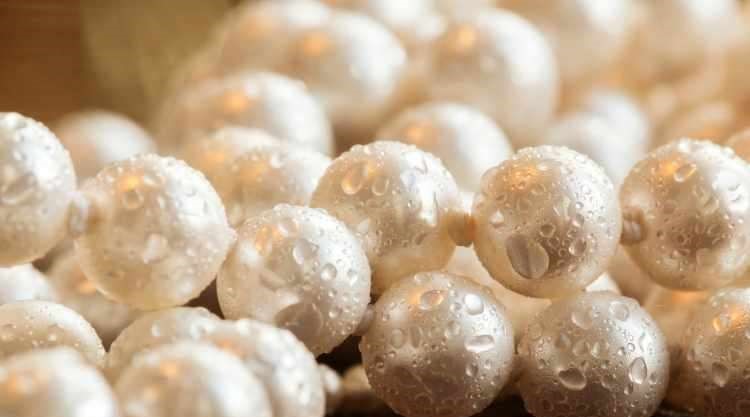
Nacre quality
Luster and nacre quality are narrowly interrelated. If the center is visible beneath the nacre, or if the pearl has an unexciting, crumbly appearance, you can take for granted that the nacre is thin. This affects the luster over and above the sturdiness of the pearl, including its overall value.
Where to buy affordable Pearls?
If you're in the marketplace to buy pearls, you're almost certainly thinking, "where is the best place to buy high-quality pearls?"
You mostly have some options: a conventional jewelry store or buying pearls from a reliable online website. It's best to be conversant about the options and their differences before deciding.
American Pearl is the best destination for pearl jewelry and premium-quality cultured pearls. The firm has directly connected with leading worldwide suppliers of the finest pearls. You can look at their fine-quality jewelry for magnificent cultured pearl earrings, pearl necklaces, pearl rings, and more at affordable prices.

Pearl Paradise offers the most extensive selection of 100% real, natural-color Tahitian pearls at affordable prices. The firm uses only superior quality loose Tahitian pearls in all its luxury brand jewelry pieces. You can look at their high-quality, typical, stylish, and trendy pearl jewelry designs.

Kay Jewelers Outlet is the best destination for discount and luxury jewelry. Look at their all-inclusive online selection, which is perfect for consumers looking for premium quality pearl jewelry. Fashion jewelry can be everything from a pearl necklace, gold bracelet, or pearl earrings to your much-desired gemstone piece.

Conclusion
Besides the diamond, no gem has mesmerized human beings more than the pearl. The oldest branded natural pearl necklace is over 4,000 years old. In the present day, a pearl is symbolized by the radiance that seems to spread out from its very center. This radiance signified to the earliest world a great inner life.


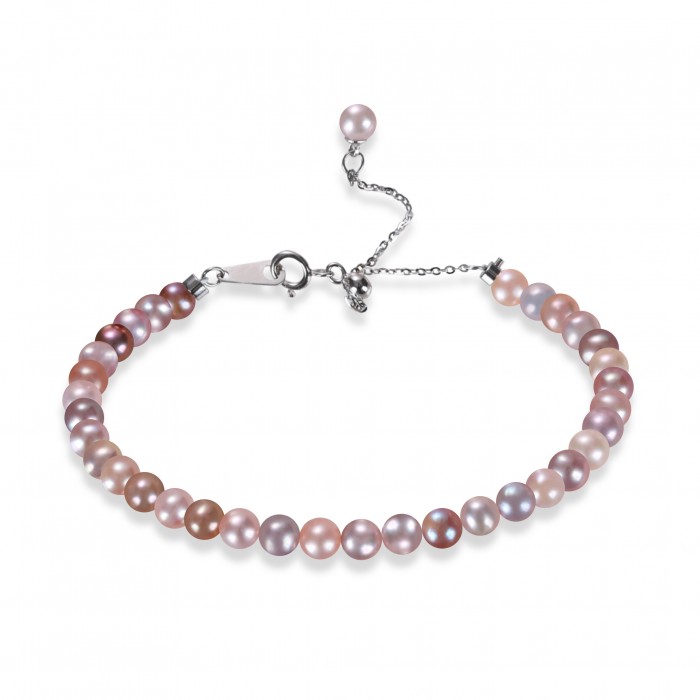
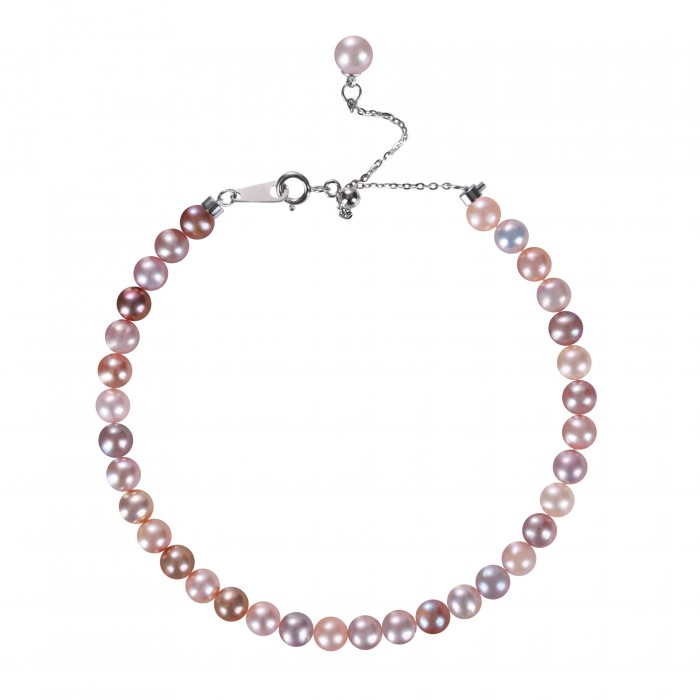
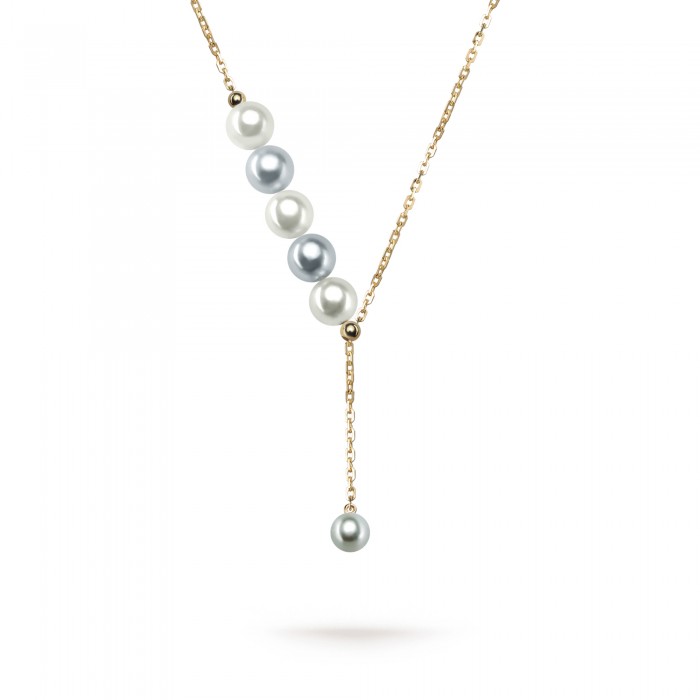
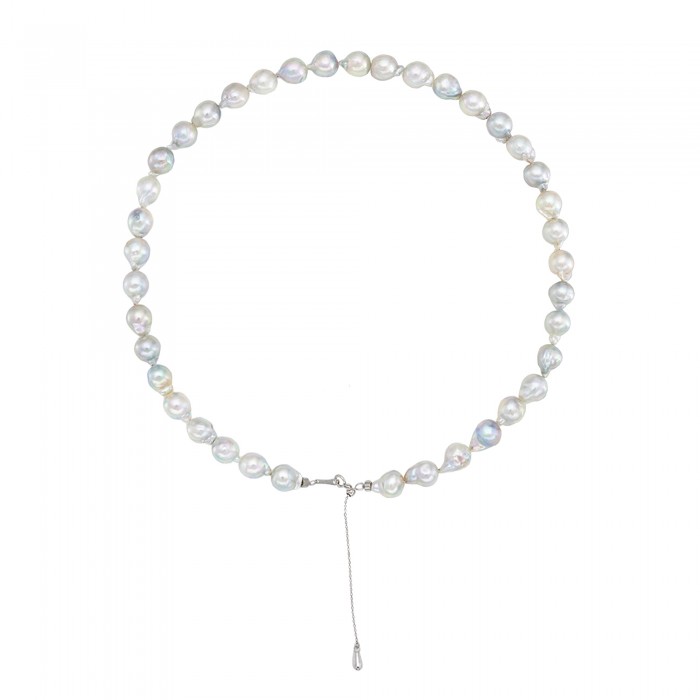
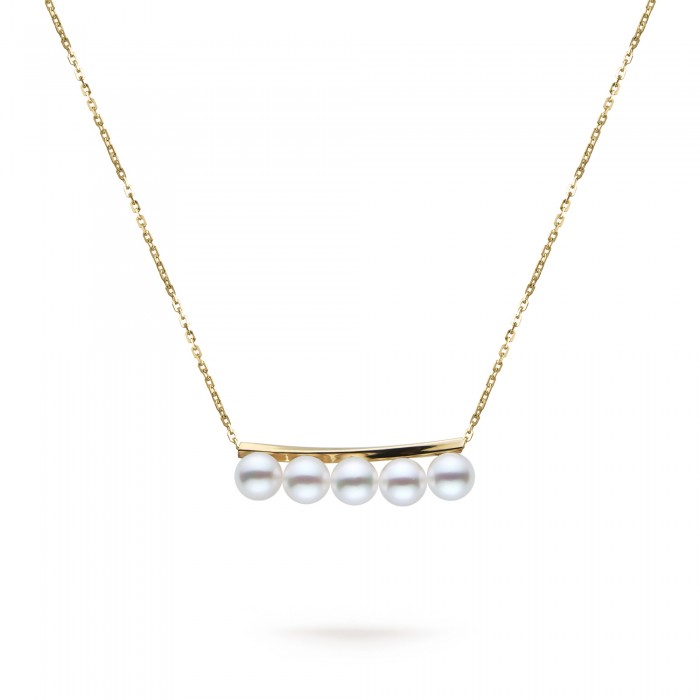
1 Comment(s)
I have some vintage pearl necklaces some with different clasps but most all in great shape one has fallen apart so pearls are loose as well. I definitely would like to know the worth of these pearls.
Leave a Comment